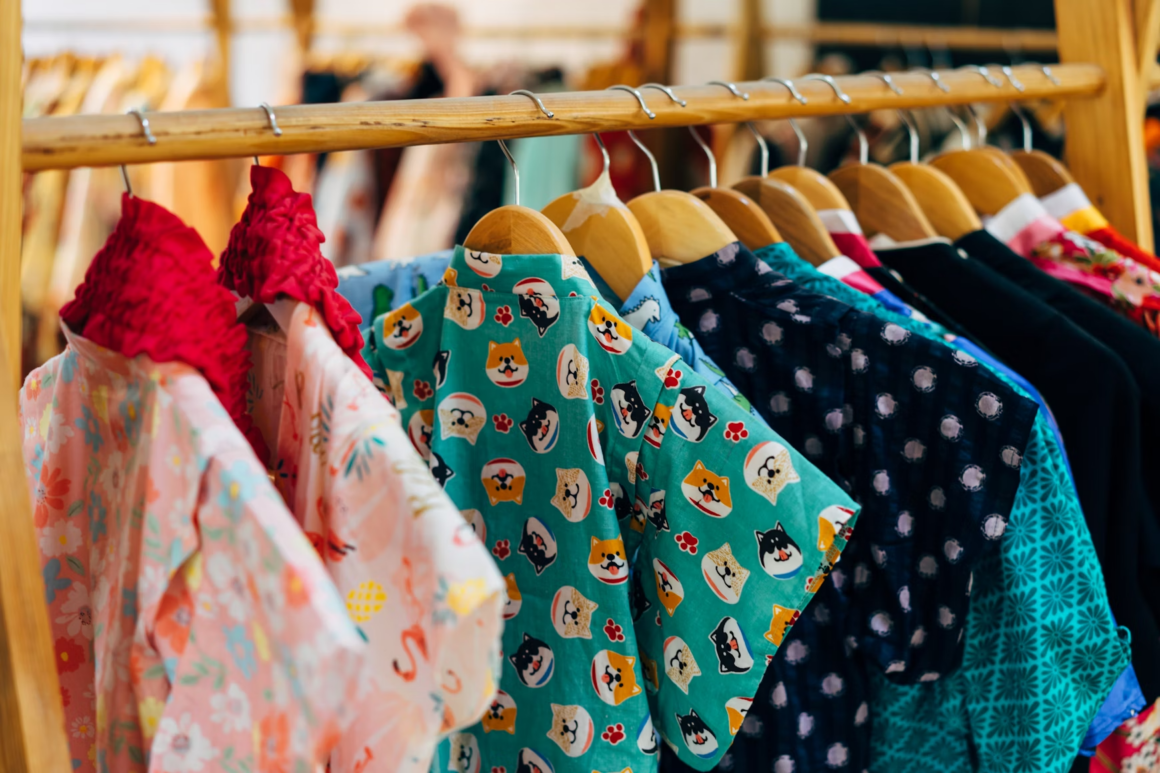Have you ever wondered what your clothes are made of? Beyond the fabrics and colors, there are a bunch of chemicals stashed in our wardrobes. Sure, clothing is an essential part of our daily lives. However, certain fabrics and materials used in the production pose serious threats to human health and the environment.
From synthetic fibers to toxic dyes and finishes, the fashion industry has a dark side that often goes unnoticed. While these chemicals may offer wrinkle resistance or stain-proofing, they can also pose serious risks. In this blog post, we’ll dive deeper into this toxic truth and learn what’s hiding in our clothes.
Table of Contents
ToggleThe Dangers of Synthetic Fibers
Synthetic fibers like polyester, nylon, and acrylic have become ubiquitous in modern clothing. They offer affordability and versatility at an attractive price. However, these materials come with a significant environmental cost. During production and washing, they release microplastics. These tiny plastic particles accumulate in water bodies and harm aquatic life.
According to 2024 research, these fibers comprise about 40–90% of the total microplastics found in water bodies. Another study by the American Chemical Society concludes that handwashing synthetic fibers releases fewer microplastics compared to machine washing.
Moreover, the manufacturing of these chemicals usually involves harmful chemicals, which leach into the environment and can cause health issues.
The Dark Side of Dyes and Finishes
The vibrant colors and special finishes that make our clothes appealing can also be a concern. Certain dyes, like Azo dyes, have been linked to skin irritation and potential carcinogenic effects.
Formaldehyde resins, used to impart wrinkle-free and anti-static properties, have raised eyebrows due to their potential health hazards. According to multiple sources, children’s clothing from popular brands contained formaldehyde, a known carcinogen. Surprisingly, even eco-friendly textiles revealed traces of formaldehyde. This finding highlights the need for stricter regulations and greater transparency in the textile industry.
Moreover, the use of per- and polyfluoroalkyl substances (PFAS) in water-repellent finishes has become a growing concern. PFAS are used to make clothing water- and stain-resistant, a feature many of us find convenient. These chemicals were found in garments from renowned brands like Lululemon and Athleta.
Clothing like raincoats, hiking gear, shirts, yoga pants, and athletic bras showed traces of PFAS. Moreover, studies have also linked PFAS to a range of health problems, including cancer, hormone disruption, and immune system suppression.
Furthermore, a 2022 study by Toxic-Free Future reveals that about 75% of water- or stain-resistant products contain PFAS. According to TruLaw, these chemicals, primarily used in firefighting foams, caused widespread contamination, resulting in a nationwide ban.
The risks associated with PFAS have led to litigation, like the ongoing AFFF lawsuit against firefighting foam manufacturers. These issues highlight the need for safer alternatives.
Ethical and Sustainable Alternatives
Fortunately, the fashion industry is witnessing a shift towards more sustainable and ethical practices. Organic cotton, bamboo, and other eco-friendly fibers offer safer alternatives to synthetic materials. Brands are embracing natural dyes and finishes, prioritizing transparency and responsible sourcing.

Organizations like the Better Cotton Initiative and the Global Organic Textile Standard (GOTS) are leading the charge by promoting ethical and environmentally friendly production methods. By supporting these initiatives and brands, you can make a positive impact while keeping your wardrobe stylish and safe.
How These Chemicals Enter Our Bodies?
You might wonder how these chemicals can affect us just by wearing clothes. It turns out there are several ways they can enter our bodies:
- Skin Absorption: Our skin is our largest organ, and it can absorb chemicals from the clothes we wear.
- Inhalation: Some fabrics release volatile organic compounds (VOCs), which we can inhale.
- Ingestion: Young children often put things in their mouths, including clothing, which could lead to the absorption of harmful chemicals.
The cumulative effect of these harmful chemicals on our bodies and the planet is a growing concern. However, you don’t have to be a passive victim of the fashion industry’s toxic practices.
Protecting Yourself and the Planet
The good news is that you can take steps to protect yourself and the environment from these hidden dangers:
- Read Labels: Look for certifications like OEKO-TEX, GOTS (Global Organic Textile Standard), and Bluesign, which indicate that a product has been tested for harmful substances.
- Choose Natural Fibers: Opt for clothing made from organic cotton, linen, hemp, or other natural materials.
- Wash New Clothes: Wash new clothes before wearing them to remove excess chemicals.
- Support Sustainable Brands: Choose brands that prioritize transparency and sustainable practices.
- Advocate for Change: Get involved in advocating for stricter regulations on textile chemicals.
By making conscious choices and demanding greater transparency, we can drive the fashion industry towards a more sustainable and healthy future.
Let’s now address some common questions about toxic chemicals in clothing.
Frequently Asked Questions
Q1. What Are the Most Toxic Dyes Used in Clothing?
Some of the most toxic dyes used in clothing include disperse dyes, which can contain carcinogenic aromatic amines, and certain acid dyes that contain heavy metals like chromium and copper.

Azo dyes, as mentioned previously, are another problematic class due to their potential to release carcinogenic amines.
Q2. How Can I Identify Clothing Made With Pfas or Other Harmful Finishes?
Unfortunately, there’s no surefire way for consumers to identify clothing treated with PFAS or other toxic finishes just by looking at labels. Your best bet is to avoid anything that is water- and stain-resistant.
Moreover, read up on brands and look for certifications like OEKO-TEX® or GOTS that restrict the use of these chemicals. Contacting brands directly to inquire about their manufacturing processes can also be helpful.
Q3. Are There Regulations on Using Toxic Chemicals in Clothing?
While some regulations exist, experts consider them inadequate or poorly enforced. The U.S. restricts using certain dyes and finishes, but many harmful chemicals are still allowed. Countries like the European Union tend to have stricter regulations, but advocacy groups continue to push for stronger, more consistent global standards.
In conclusion, your clothing choices have a bigger impact than you think. By understanding the hidden dangers lurking in our wardrobes, you can make informed decisions that protect your health and the planet.
Embrace sustainable fashion, support ethical brands, and advocate change. It’s time to redefine what it means to be “dressed to kill”—by choosing clothes that empower, not endanger.



